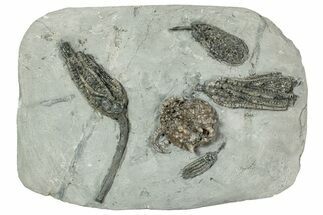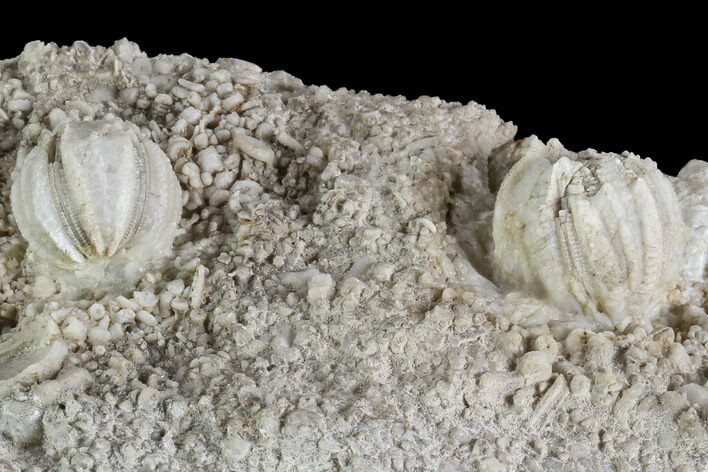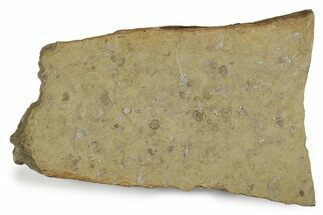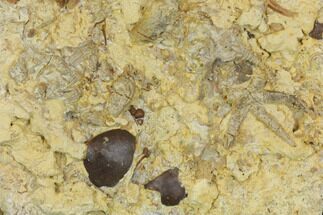This Specimen has been sold.
Two Fossil Blastoids (Shizoblastus) - Arkansas
This is a cool plate of two Mississipian aged echinoderm fossils from Arkansas. There are two blastoid fossils (Schizoblastus sayi) on a matrix full of crinoid fragments. The piece has been prepared with air abrasives and comes with an acrylic display stand.
Blastoids are an extinct type of filter feeding, stemmed echinoderm that resembles a small hickory nut. They thrived during the Mississippian period before going extinct during the great Permian extinction. While not as diverse as their crinoid relatives, they were equally as common in rocks around the world. Blastoids were protected by a set of interlocking plates that formed the main body, or theca. In life, a typical blastoid's theca was attached to a stalk or column made up of stacked disc-shaped plates.
Crinoids, sometimes commonly referred to as sea lilies, are animals, not plants. They are echinoderms related to starfish, sea urchins, and brittle stars. Many crinoid traits are like other members of their phylum; such traits include tube feet, radial symmetry, a water vascular system, and appendages in multiples of five (pentameral). They first appeared in the Ordovician (488 million years ago) and some species are still alive today.
SPECIES
Schizoblastus sayi
AGE
LOCATION
Boone County, Arkansas
FORMATION
Elsie Formation
SIZE
Rock 3.3x2.4"
CATEGORY
ITEM
#87305
We guarantee the authenticity of all of our specimens.
 Reviews
Reviews













